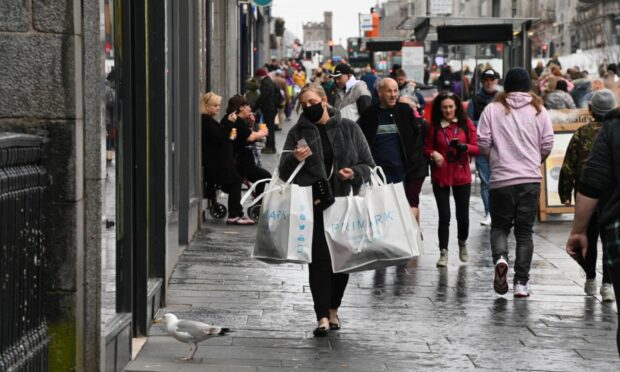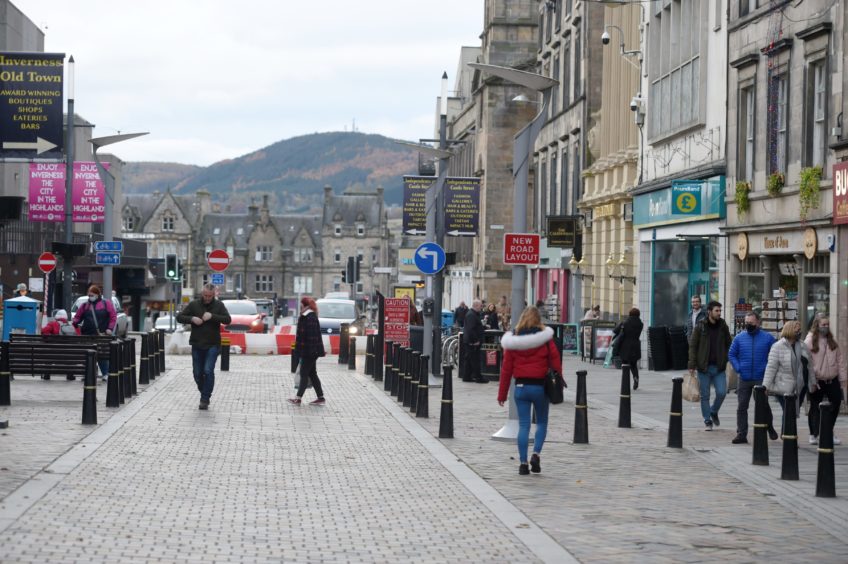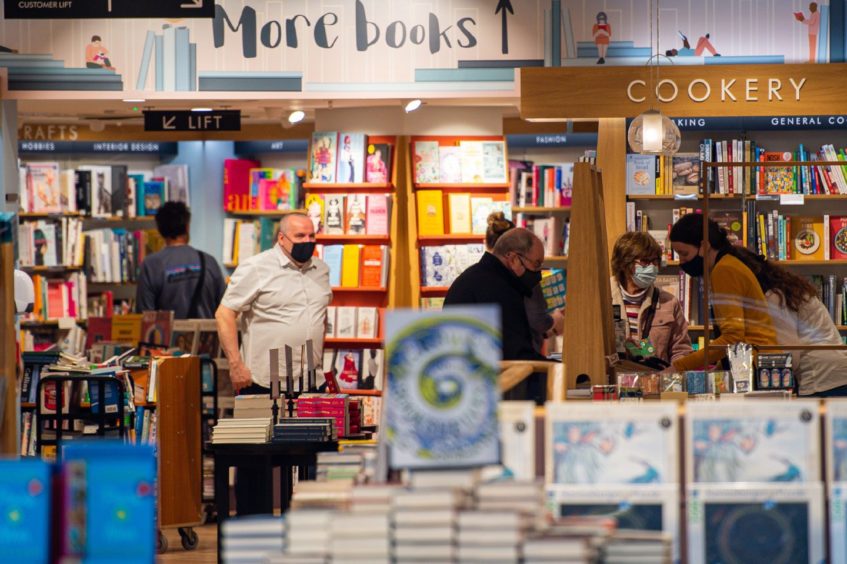Scotland saw the steepest decline in shopper “footfall” out of all UK nations during June, compared with the same month in pre-pandemic 2019, new figures out today (July ) show.
The number of people setting foot in retail outlets north of the border was down by 29.5%, a 4.8 percentage point drop from May and worse than the 27.6% decline seen across the whole UK.
Footfall in Scottish shopping centres suffered an even steeper fall last month – down by 34.1% from June 2019 and worse than the 33% slide on the same two-year basis in May.
Shopping centres continue to struggle to attract shoppers, with footfall more than a third below the 2019 figure. ”
Ewan MacDonald-Russell, Scottish Retail Consortium
Retailing experts say the figures illustrate just how far the industry in Scotland is from recovering from the Covid-19 crisis.
The latest Scottish Retail Consortium (SRC)- Sensormatic IQ data covers the five weeks to July 3.
SRC head of policy and external affairs Ewan MacDonald-Russell said: “The recovery in shopper footfall stalled in June in the second full month since shops fully reopened, with total footfall falling back by nearly 5%, compared to the previous month.
Where are you shopping and will the personal touch help to save our high streets?
“This was very different from the story elsewhere in the UK, potentially driven by the pause in relaxing Covid restrictions north of the border.
“That reverse meant visits to retail destinations were nearly a third lower than the comparable period in 2019. Shopping centres continue to struggle to attract shoppers, with footfall more than a third below the 2019 figure.”
Mr MacDonald-Russell added: “These figures illustrate just how far the retail industry is from recovering from the Covid crisis.
“Whilst stores can trade, the restrictions on hospitality and office working continue to impact on visits to the high street. Operating stores itself remains challenging with capacity limits due to caps on the number of customers and physical distancing rules.
Humble farm shop with honesty box is hit in Aberdeenshire
“There is a growing need for policymakers to consider how best to reignite consumer confidence.
“Retailers will continue to work to attract customers but could be aided through clear messaging to encourage visits to town centres, short-term initiatives to allow free parking, or even a retail voucher scheme to encourage shoppers back to the high street.”
Sensormatic IQ is part of international smart buildings specialist Johnson Controls.
Andy Sumpter, Europe, Middle East and Africa retail consultant, Sensormatic Solutions, said: “The UK’s footfall in June was mildly better than what we saw in May.
“This small uplift – only seen in England and Wales – was perhaps unsurprising given that Covid rules were, by and large, the same.
Export slump threatens to put the brakes on Scottish economic recovery
“Whilst confidence from the vaccination programme and some indoor dining might have given a much-needed boost, the delayed roll-back of restrictions, due to the accelerated spread of the delta variant, will have dampened the impact.”
Mr Sumpter said a further relaxation of Covid rules south of the border may give the industry a glimpse into “what the somewhat over-referenced new normal may actually look like”.


